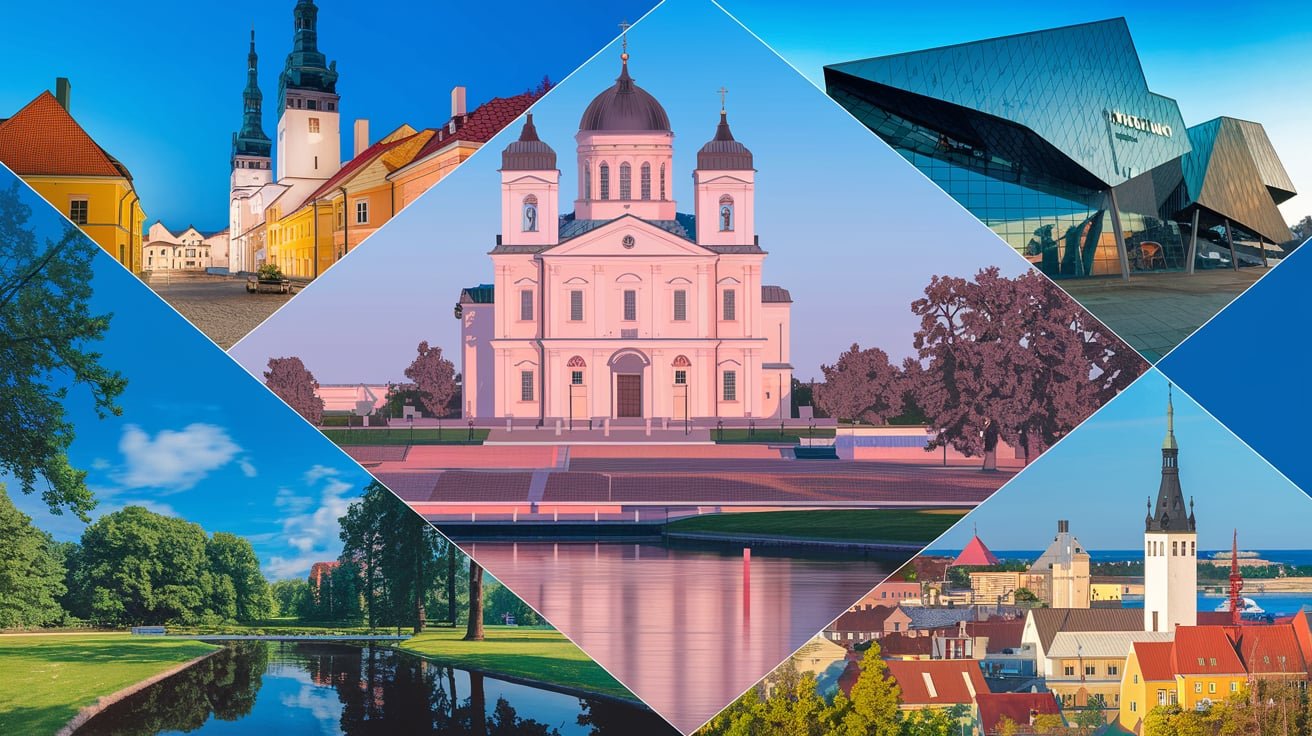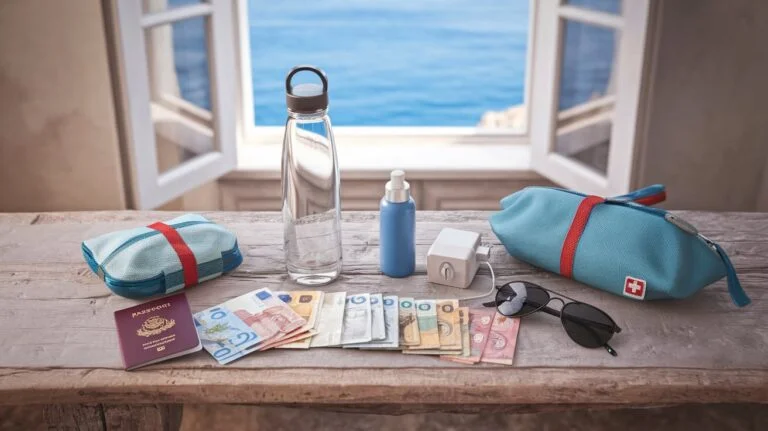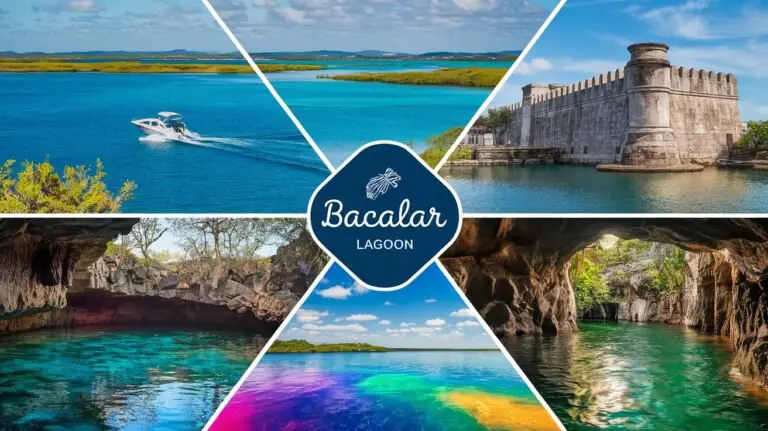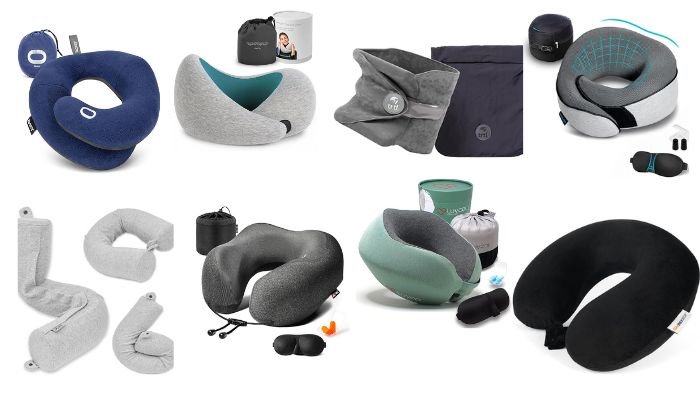Disclaimer: This post may contain affiliate links, meaning we get a small commission if you make a purchase through our link at no extra cost to you. For more information, please visit our Disclaimer Page.
Perched on the Baltic Sea, Tallinn is a city that effortlessly blends medieval charm with modern innovation.
You may have found yourself wondering: Is Tallinn worth visiting?
With its cobbled streets, centuries-old architecture, and a thriving creative scene, this Estonian capital offers something for every traveler.
If you’re drawn to its rich history, vibrant culture, or emerging food scene, or looking for great solo travel experience Tallinn promises an experience beyond the ordinary.
In this guide, we’ll explore everything you need to know to decide if this Baltic gem belongs on your travel list.
Planning Your Trip to Tallinn
Best Time to Visit
Tallinn changes dramatically with the seasons, offering unique experiences year-round:
Winter (Dec-Feb): With snow-covered streets and medieval rooftops, Tallinn’s winter is magical. The Christmas market in Town Hall Square is one of Europe’s coziest. Temperatures range from -5°C to 0°C (23-32°F), offering fewer tourists and a true Nordic ambiance.
Spring (Mar-May): As temperatures rise from 0°C to 15°C (32-59°F), Tallinn comes alive with blooming flowers, especially in Kadriorg Park. It’s a peaceful time to explore without crowds.
Summer (Jun-Aug): The peak season brings long days (up to 19 hours in June), festivals, and pleasant temperatures between 15-25°C (59-77°F). Perfect for coastal exploration and outdoor cafés, though expect more tourists.
Autumn (Sep-Nov): Fall showcases vibrant foliage and cooler temperatures (10°C to 0°C/50-32°F). Fewer tourists make it ideal for museum visits and cozy cafés before winter sets in.
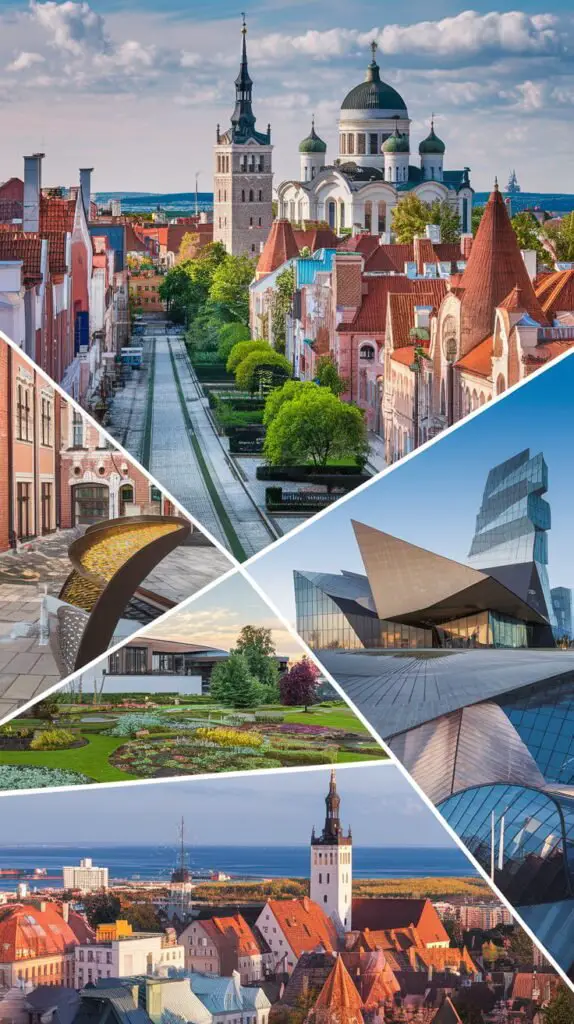
Getting to Tallinn
By Air: Tallinn Airport (TLL) connects to numerous European cities via carriers like AirBaltic, Finnair, Lufthansa, Ryanair, and Wizz Air.
The airport is conveniently located just 4km from the city center, with easy bus connections (Line 4) or affordable taxis.
By Sea: The most popular sea route is the Helsinki-Tallinn ferry, with multiple daily departures and journey times ranging from 2 to 3.5 hours.
Operators include Tallink Silja, Viking Line, and Eckerö Line, with prices varying based on season.
The ferry terminals are within walking distance of the Old Town.
By Land: International bus services connect Tallinn to neighboring Baltic countries, Poland, and beyond.
Flixbus and Lux Express offer comfortable options, with the main bus station located a short walk from the city center.
Practical Information
Currency: Estonia uses the Euro (€). ATMs are widely available throughout the city.
Language: Estonian is the official language, but English is widely spoken in tourist areas, hotels, and restaurants, especially among younger Estonians. Russian is also commonly understood.
Visa Requirements: Estonia is part of the Schengen Area, so EU citizens can enter with just an ID card, while travelers from the US, Canada, Australia, and many other nations can visit visa-free for up to 90 days.
Budget Expectations: Tallinn offers excellent value compared to Western European capitals:
- Budget travelers can get by on €50-70 per day (hostel bed, public transport, budget meals)
- Mid-range travelers should budget €100-150 daily (mid-range hotel, occasional taxi, restaurant meals)
- Luxury travelers will find plenty of high-end options for €200+ per day
Where to Stay in Tallinn
Old Town (Vanalinn)
Staying within the medieval walls of Tallinn’s UNESCO-listed Old Town puts you at the heart of the city’s charm.
While accommodation here tends to be pricier, the convenience of walking directly onto those cobblestone streets can be worth it.
Luxury: The Three Sisters Hotel offers 23 rooms in connected 14th-century merchant houses, combining historical architecture with modern amenities.
Mid-Range: Hotel Barons Old Town provides reasonably priced rooms in a renovated historic building, with an excellent location near Town Hall Square.
Budget: Munkenhof Hostel offers clean, budget-friendly accommodation within the Old Town walls, with both dormitory and private room options.
Kalamaja
Just northwest of the Old Town, Kalamaja has transformed from a working-class neighborhood to Tallinn’s bohemian district.
With wooden houses from the 1920s and 1930s, hipster cafés, and creative businesses, it’s perfect for travelers seeking local vibes.
Recommendations: Telliskivi Hostel offers affordable rooms near the creative district, while numerous Airbnb options provide a chance to stay in the area’s characteristic wooden houses.
Telliskivi Creative City
Adjacent to Kalamaja, this former industrial complex now buzzes with galleries, workshops, boutiques, and some of Tallinn’s most innovative restaurants.
It’s ideal for creative travelers who value proximity to both cultural hotspots and the Old Town.
Recommendations: Look for apartments in this area on booking platforms for an authentic stay in Tallinn’s creative heart.
Rotermann Quarter
Between the Old Town and the port, this revitalized former industrial area features striking contemporary architecture alongside carefully restored historic buildings.
Its central location makes it convenient for both sightseeing and shopping.
Recommendations: The 4-star Centennial Hotel Tallinn offers stylish rooms in this dynamic district.
Exploring Tallinn’s Old Town
Tallinn’s medieval core ranks among Europe’s best-preserved old towns, earning its UNESCO World Heritage status.
Encircled by imposing stone walls and crowned with red-tiled rooftops, this compact area invites hours of wandering.
Must-See Sights
- Town Hall Square (Raekoja Plats): The beating heart of the Old Town since the 14th century, this sprawling square hosts cafés, restaurants, and seasonal events including the enchanting Christmas market. The Town Hall itself, completed in 1404, represents magnificent Gothic architecture.
- Town Hall Pharmacy (Raeapteek): Operating continuously since at least 1422, this is one of Europe’s oldest pharmacies. The small museum section displays curious medieval remedies including mummy juice, powdered unicorn horn, and dried frogs.
- Alexander Nevsky Cathedral: This grand Russian Orthodox cathedral on Toompea Hill showcases distinctive onion domes and lavish interiors with mosaics and icons. Remember that photography is prohibited inside.
- St. Olaf’s Church: Once the tallest building in the world (from 1549 to 1625), its 124-meter spire still dominates Tallinn’s skyline. Climb the tower (open seasonally) for spectacular city views.
- Viru Gate: These picturesque twin towers form part of the original city fortifications and now mark the entrance to the Old Town from the modern city center.
- St. Catherine’s Passage (Katariina Käik): This atmospheric medieval lane houses artisan workshops where you can watch craftspeople create ceramics, glassware, and textiles using traditional methods.
Hidden Gems
Tallinn City Wall: While most visitors see sections of the wall, fewer explore the accessible towers. Hellemann Tower and the connecting wall walk offer views over red-tiled rooftops.
Peeping Tom’s Alley (Müürivahe Street): This narrow passage between buildings got its name from a legend about a curious local who would spy on passersby.
Master’s Courtyard (Meistrite Hoov): Tucked away from main tourist routes, this charming courtyard houses artisan workshops, a chocolate café, and quaint shops in a peaceful setting.
Viewpoints and Scenic Spots
To fully appreciate Tallinn’s fairytale quality, seek out these panoramic vantage points:
- Kohtuotsa Viewing Platform: Located on Toompea Hill, this popular viewpoint offers the classic postcard panorama of Tallinn’s spire-studded skyline and terracotta rooftops. Benches allow visitors to linger and soak in the view.
- Patkuli Viewing Platform: Just a short walk from Kohtuotsa, this viewpoint provides a different perspective that includes the city walls and Tallinn Bay. It’s particularly stunning at sunset.
- Toompea Hill: Home to Estonia’s Parliament and several viewpoints, this limestone hill rises 20-30 meters above the Lower Town, offering sweeping vistas in all directions. The Danish King’s Garden at its base features medieval statues and atmosphere.
- TV Tower: Located outside the city center in Pirita (easily reached by bus), this 314-meter tower features an observation deck at 170 meters, providing expansive views of Tallinn and the Baltic Sea.
Cultural and Historical Attractions
- Toompea Castle: Housing the Estonian Parliament (Riigikogu), this castle complex has existed in some form since at least the 9th century. Its current pink Baroque façade dates to the era of Catherine the Great. Free guided tours of the parliament are available with advance reservation.
- Kiek in de Kök: This massive 15th-century artillery tower (whose Low German name means “Peek into the Kitchen”) now houses a fascinating museum of Tallinn’s military history, including access to some of the underground bastion tunnels.
- Kadriorg Palace and Park: Built by Peter the Great for his wife Catherine I, this grand Baroque palace sits amid manicured gardens 2km east of the Old Town. The palace now houses the Kadriorg Art Museum’s collection of foreign art, while the surrounding park offers peaceful walking paths and seasonal floral displays.
- KUMU Art Museum: Estonia’s largest art museum showcases both historical Estonian art and contemporary works in an award-winning limestone and glass building at the edge of Kadriorg Park.
- Seaplane Harbour (Lennusadam): This innovative maritime museum occupies a massive concrete seaplane hangar from 1916. Exhibits include the 1936 submarine Lembit, historic vessels, and interactive displays covering Estonia’s rich maritime history.
- Maarjamäe History Centre: This complex includes the Estonian History Museum, the Film Museum, and the striking Victims of Communism Memorial, offering insights into Estonia’s complex 20th-century history.
Exploring Beyond the Old Town
While Tallinn’s medieval center justifiably captures visitors’ attention, the city’s most dynamic neighborhoods lie just beyond the ancient walls.
Kalamaja District
Once a working-class area housing fishermen and factory workers, Kalamaja has evolved into Tallinn’s hipster haven. Characterized by colorful wooden houses known as “Tallinn Houses,” this neighborhood offers:
- Telliskivi Creative City: A revitalized industrial complex housing over 250 businesses, from design studios and galleries to some of Tallinn’s best restaurants and bars. Don’t miss the weekly Saturday flea market.
- Balti Jaam Market: Recently renovated covered market selling everything from fresh local produce to vintage clothing, street food, and Estonian design items.
- Põhjala Brewery & Tap Room: Located in the former Põhjala rubber factory, this craft brewery offers tours and tastings in an industrial-chic setting.
Noblessner Seafront Quarter
This former submarine shipyard has transformed into one of Tallinn’s trendiest districts, blending industrial heritage with contemporary architecture:
- PROTO Invention Factory: An interactive science center where historical inventions come to life through virtual and augmented reality.
- Kai Art Center: Contemporary art exhibitions in a converted industrial space.
- Põhjala Brewery & Tap Room: Located in the former Põhjala rubber factory, this craft brewery offers tours and tastings in an industrial-chic setting.
Pirita
Located 5km east of the center, Pirita offers natural beauty with:
- Pirita Beach: Tallinn’s largest beach, perfect for summer swimming or year-round coastal walks.
- Pirita Convent Ruins: The atmospheric remains of a 15th-century St. Bridget’s Convent.
- Tallinn Botanic Garden: Over 4,500 plant species in themed gardens, particularly lovely in spring and summer.
Day Trips from Tallinn
Tallinn’s compact size means you can thoroughly explore the city in a few days, leaving time for these rewarding excursions:
Lahemaa National Park
Estonia’s largest national park, located about 50km east of Tallinn, showcases the country’s natural beauty with pristine forests, coastal landscapes, and traditional villages:
- Viru Bog: A 3.5km boardwalk trail through an otherworldly peat bog, with a viewing tower offering panoramic vistas.
- Palmse, Sagadi and Vihula Manors: Beautifully restored Baltic German estates that illustrate Estonia’s complex history.
- Altja Fishing Village: Traditional wooden architecture in a picturesque coastal setting.
Jagala Waterfall
Just 30km east of Tallinn, Estonia’s highest natural waterfall (8 meters) creates a stunning 50-meter-wide cascade. In winter, it often freezes into a magnificent ice sculpture.
Rummu Quarry
This flooded former limestone quarry and Soviet prison creates a surreal landscape about 45km southwest of Tallinn. The clear blue waters surrounding partially submerged prison buildings attract photographers, swimmers, and divers in summer.
Helsinki, Finland
With multiple daily ferry connections making the crossing in just 2-3.5 hours, a day trip to Finland’s capital makes for an easy international excursion. Contrast Helsinki’s neoclassical architecture and Finnish design with Tallinn’s medieval ambiance.
Food and Drink in Tallinn
Estonian cuisine blends Nordic, Russian, and German influences, creating a unique culinary identity worth exploring:
Traditional Estonian Foods
- Black Bread (Leib): Dense, slightly sweet rye bread forms the foundation of Estonian cuisine.
- Herring: Served in countless preparations, from simple pickled versions to elaborate layered salads.
- Mulgipuder: A hearty porridge of potatoes, barley, and bacon that exemplifies Estonian comfort food.
- Kiluvõileib: Open-faced sprat sandwiches on dark bread with eggs and sauce.
- Kama: A traditional Estonian flour mixture used in desserts and smoothies.
- Kohuke: Sweet curd snacks often covered in chocolate, perfect for on-the-go energy.
Where to Eat
Traditional Estonian:
- Olde Hansa: Medieval-themed restaurant serving authentic ancient recipes by candlelight in the Old Town.
- Rataskaevu 16: Contemporary Estonian cuisine using local ingredients in a charming Old Town setting.
- Kuldse Notsu Kõrts (Golden Piglet Inn): Hearty Estonian fare including excellent pork dishes in a rustic atmosphere.
Modern Estonian:
- Restaurant Ore: Located in the Kultuurikatel creative hub, it offers innovative dishes using seasonal Estonian ingredients.
- NOA: Just outside the city in Pirita, this upscale restaurant provides stunning sea views alongside creative Nordic-inspired cuisine.
Cafés and Casual Eats:
- Maiasmokk: Estonia’s oldest café (established 1864) serves classic pastries in a historic setting.
- Kompressor: Famous for enormous, affordable pancakes (both sweet and savory) near the Old Town.
- Balti Jaam Market: For a casual food hall experience with everything from traditional Estonian to international street food.
Nightlife and Drinks
- Koht: Tiny beer bar offering an extensive selection of Estonian craft brews.
- Labor Bar: Quirky science-themed cocktail bar where drinks come in beakers and test tubes.
- Pudel Baar: Craft beer institution in the heart of Telliskivi Creative City.
- Nümf: Stylish cocktail bar offering innovative creations in an intimate setting.
Practical Tips for Visiting Tallinn
Getting Around
Tallinn’s historic center is compact and best explored on foot, but for venturing further:
- Public Transport: Tallinn’s network of buses, trams, and trolleybuses is efficient and affordable. Consider purchasing a Tallinn Card for unlimited rides plus museum access.
- Taxis and Ride-Sharing: Both traditional taxis and ride-sharing services like Bolt (Estonia’s version of Uber) offer convenient transportation at reasonable rates.
- Cycling: Bike lanes and rental services make cycling a pleasant option in warmer months, particularly along the waterfront and in residential districts.
Money-Saving Tips
- Tallinn Card: If you plan to visit multiple museums and attractions, this city card offers free entry and public transport for 24, 48, or 72 hours.
- Free Walking Tours: Several companies offer tip-based walking tours that provide excellent introductions to the Old Town.
- Lunch Specials: Many restaurants offer significantly discounted lunch menus on weekdays.
- Water: Tap water is entirely safe to drink, so bring a refillable bottle.
Cultural Etiquette
- Estonians tend to be reserved: Don’t be surprised by minimal small talk in service interactions.
- Indoor voices: Loud conversations in public places may draw disapproving looks.
- Punctuality matters: Estonians value timeliness, so arrive on schedule for tours or reservations.
- Shoes off: If invited to someone’s home, it’s customary to remove your shoes at the entrance.
Conclusion: Is Tallinn Worth Visiting?
After exploring all that Tallinn has to offer, it’s clear that this city is well worth visiting.
From the cobblestone streets of the Old Town to the breathtaking views from Toompea Hill, there’s so much to see and do here.
Is Tallinn worth visiting? Absolutely! The city offers a mix of culture, history, and modern innovation that you won’t find anywhere else. It’s an ideal destination for anyone who loves discovering hidden gems and experiencing a place full of character.
If you’re a history buff, a foodie, or someone who just enjoys exploring new cities, Tallinn has something for you.
Its charm and welcoming atmosphere will leave a lasting impression.
If you’re planning a European adventure, don’t miss the chance to visit this Baltic city—it’s more than worth the trip.

